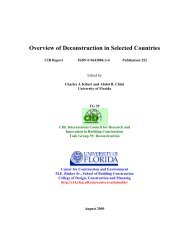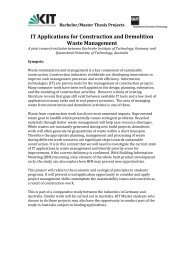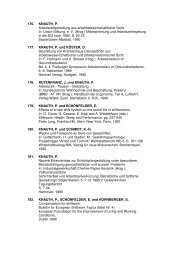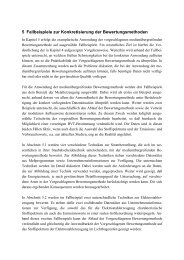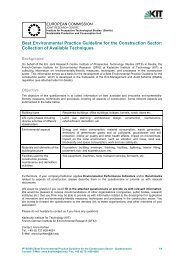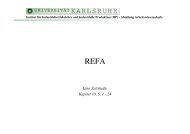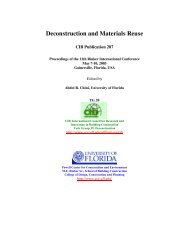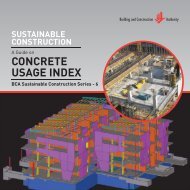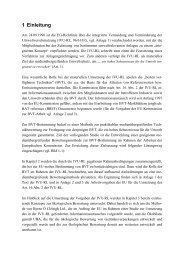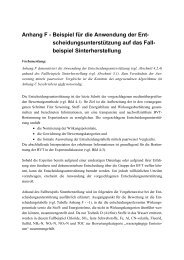Waste reduction final report -4 - Test Input
Waste reduction final report -4 - Test Input
Waste reduction final report -4 - Test Input
You also want an ePaper? Increase the reach of your titles
YUMPU automatically turns print PDFs into web optimized ePapers that Google loves.
components. However, recycling of steel means the steel goes back to the mill to be melted<br />
down for production of new steel which generally requires more energy. Similarly, concrete<br />
frame buildings can be entirely reused saving on the production of new concrete, or the<br />
concrete can be crushed and down-cycled, but this usually only displaces some of the primary<br />
aggregate and not the concrete (which includes cement). Reuse will generally lead to<br />
considerably more significant greenhouse gas <strong>reduction</strong>s, as can be seen in Table 8.<br />
This study summarised that the overall recycling and reuse initiatives saved 1,073,563 kg of<br />
carbon dioxide equivalent (CO 2 e), or 4.8 kg of CO 2 e per tonne of diverted CRD waste. The<br />
material contribution to net greenhouse gas savings was as follows: concrete (69%), vinyl<br />
windows (13%), steel (12%), asphalt (4%), with all the remaining materials amounting to<br />
2%. The concrete was very significant due to three sites <strong>report</strong>ing concrete reuse which was<br />
attributed to the reuse of a building. Due to the greater benefit of reuse, this strategy<br />
accounted for 85% of the greenhouse gas savings across the seven sites assessed.<br />
Table 8: Greenhouse Gas Savings by Site and Material Type 18<br />
Case<br />
study<br />
#<br />
Material<br />
Quantity<br />
(tonnes)<br />
Diversion<br />
method<br />
Substitutes for<br />
or avoids<br />
GHG/<br />
unit<br />
(kg)<br />
1 gyproc 7.47 recycled raw gypsum 24 179<br />
5 gyproc 2.11 recycled raw gypsum 24 51<br />
7<br />
Net GHG<br />
savings<br />
(kg)<br />
steel stall 1.36 reused hot-rolled sheet 1,862 2,532<br />
asphalt 16.36 reused asphalt 111 1,816<br />
clay brick 51.14 reused clay brick 2.48 7,440<br />
concrete 3005 reused concrete 170 295,800<br />
9 vinyl windows 3.11 reused vinyl windows 122 139,080<br />
11 concrete 8,965 recycled aggregate 3.44 26,357<br />
structural steel 54.82 recycled virgin steel 820 44,952<br />
rebar 97 recycled virgin steel 820 79,540<br />
copper 6.1 recycled virgin copper 1600 9,760<br />
wood 257.52 recycled Animal bedding 11 2,833<br />
13 concrete 4600 reused concrete 170 415,820<br />
asphalt 385.5 reused asphalt 111 42,791<br />
14 wood 4 reused wood 68 272<br />
steel cladding 2 reused galv. steel 1,965 3,930<br />
concrete 2.1 reused concrete 195 410<br />
Total 1,073,563<br />
18 Let’s Climb Another Molehill - An Examination of Construction, Demolition and Renovation (CRD) <strong>Waste</strong><br />
Diversion in Canada and Associated Greenhouse Gas Emission Impacts, The Recycling Council of Ontario<br />
(RCO), 2005, Chapter 4.<br />
21



